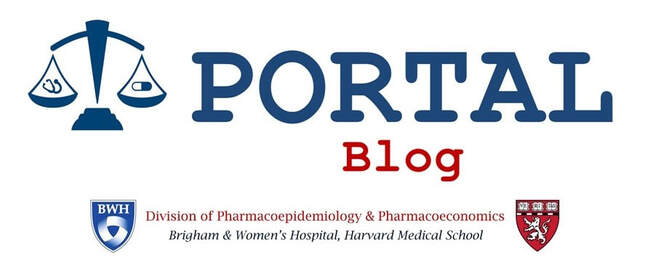|
Jonathan J. Darrow and Jing Luo
This blog post originally appeared on the Blog of the Journal of Medical Ethics and can be found here. As government leaders move to relax physical distancing requirements related to severe acute respiratory coronavirus 2 (SARS-CoV-2), a central assumption is that mechanical ventilators will form part of the safety net needed to sustain life in those afflicted with the disease it causes, Covid-19. Ventilators have been described as “crucial” and “essential” “lifesaving devices” that are “desperately needed.” In March, Mayor Bill de Blasio memorably warned that if New York City didn’t get more ventilators “people will die.” By Executive Order, President Trump invoked the Defense Production Act, authorizing the government to compel private industry to produce more of them—at least 30,000 from General Motors alone, at $16,313 each. Overlooked in most news reports was the extent to which ventilators might actually benefit patients with Covid-19. Ventilator Effectiveness Outcomes can vary according to medical circumstances, but historical data provide some insight. The most comprehensive evaluation of prolonged (generally >14 days) mechanical ventilation is a 2015 meta-analysis of 124 observational studies, which found that 57% of patients suffering from various conditions were liberated from mechanical ventilation and 38% were alive at 1 year. Limited evidence is available in patients with coronavirus: in the largest case series in the US, approximately 20% of 5700 hospitalized patients with confirmed SARS-CoV-2 receiving care in NY-area hospitals required mechanical ventilation. Of the 320 patients with an out-of-hospital disposition by study completion, a staggering 88% of those receiving mechanical ventilation died. These preliminary figures could change since 831 patients remained hospitalized and on ventilation when these results were published, but available data suggest that the overall prognosis for patients with Covid-19 who require mechanical ventilation is poor. Even for those who survive, life may not return to normal. The 2015 meta-analysis found that only 19% of all patients were discharged to home (rather than to another facility), and a separate Duke University study of 126 patients reported that only 9% were independent of major functional status limitations at 1 year. A 2019 study of 315 patients receiving prolonged mechanical ventilation at a Chicago-area hospital found that, at 1 year, 60 (19%) could bathe independently, 75 (24%) could dress independently, and 61 (19%) could toilet independently. Expectations of Outcomes by Physicians and Family Members Consistent with the evidence-free discussion of ventilator value, patients and family members have been shown to substantially overestimate the clinical benefits of mechanical ventilation. In a 2009 Duke University study, almost all (93%) family members expected the patient to survive at 1 year, and most (71%) expected high functional status at that time. These inaccurate expectations about prognosis could be the result of the unique circumstances of each patient, such as age and baseline health status, and associated variability in expected outcomes. But the available data offer another possibility: In contrast to family members, fewer than half (43%) of physicians expected patients to be alive at 1 year and almost none (6%) expected them to have high functional status at that time. These data suggest that poor communication may be contributing to inaccurate perceptions of ventilator benefit. The Importance of Disclosure It can be uncomfortable to communicate poor prognoses to patients, and physicians and government officials may prefer to emphasize hope, particularly when there is genuine uncertainty. But ethical ideals of patient autonomy cannot be achieved without disclosing treatment alternatives and their expected benefits and risks, based on the best available evidence. Disclosure is also necessary to enable government officials to make appropriate decisions and benefit from public support when doing so. For example, if ventilator benefit/risk ratios are overestimated, physicians could be pressured to continue a patient on ventilation even when clearly futile, and government officials might under-invest in prevention efforts or, in the longer term, in the development of new drugs or vaccines. Patients and government officials may overestimate benefit in part because the use of mechanical ventilators is supported by a compelling mechanistic rationale: patients need oxygen, and ventilators help patients breathe. But real-world complexities mean simplistic rationales do not always accurately predict outcomes. In some patients with Covid-19, the use of ventilators with higher pressures could actually cause harm, such as by causing over-expansion of alveoli in unaffected regions of the lungs. Ventilator associated pneumonia is also a risk. The issue of effectiveness is not unique to ventilators, and overestimations (or underestimations) of the benefits of drugs, vaccines, social distancing, and other measures could similarly lead to incorrect priorities and misallocation of resources while leaving family members unprepared for what is to come. Although it is desirable for policymakers to actively work to avoid shortages of ventilators or other resources before they occur, the greater the reluctance to engage with the evidence, the less likely important decisions will be evidence-based, leaving officials and health care workers—and ultimately patients—vulnerable to the potential influence of public emotion. Acknowledgment: The authors thank Peter Doshi, PhD, Stephen Darrow, JD, MS, and William Feldman, MD, DPhil for helpful comments. Comments are closed.
|
AuthorPORTAL Blog posts are authored by PORTAL faculty, trainees, and collaborators. Archives
January 2022
Categories |
|
Program On Regulation, Therapeutics And Law (PORTAL)
Division of Pharmacoepidemiology and Pharmacoeconomics 1620 Tremont Street, Suite 3030 Boston, MA 02120 |




 RSS Feed
RSS Feed
